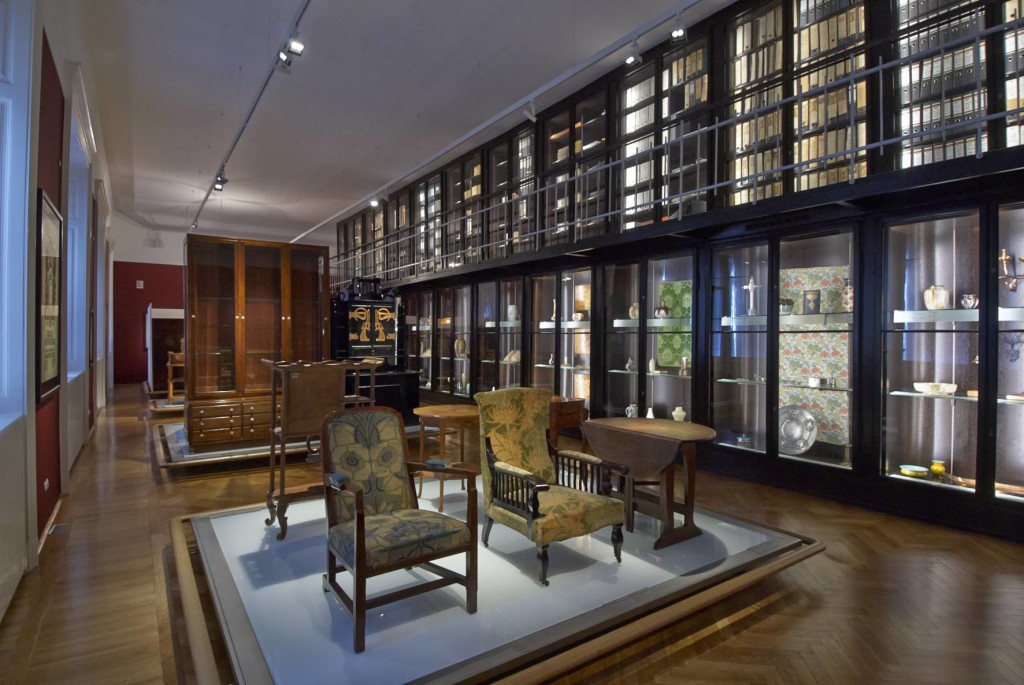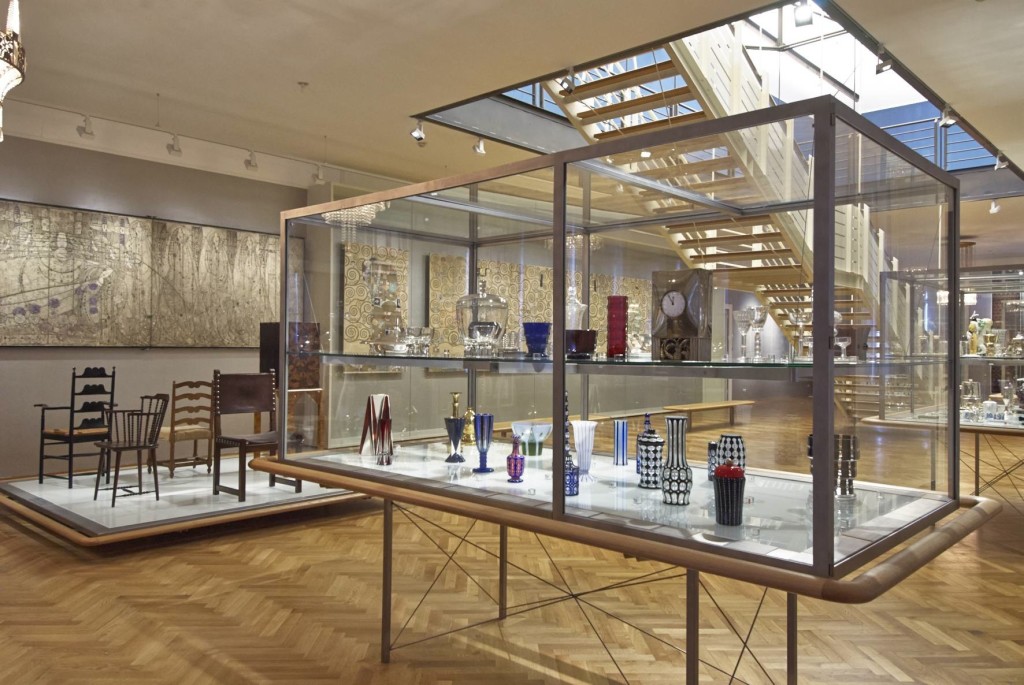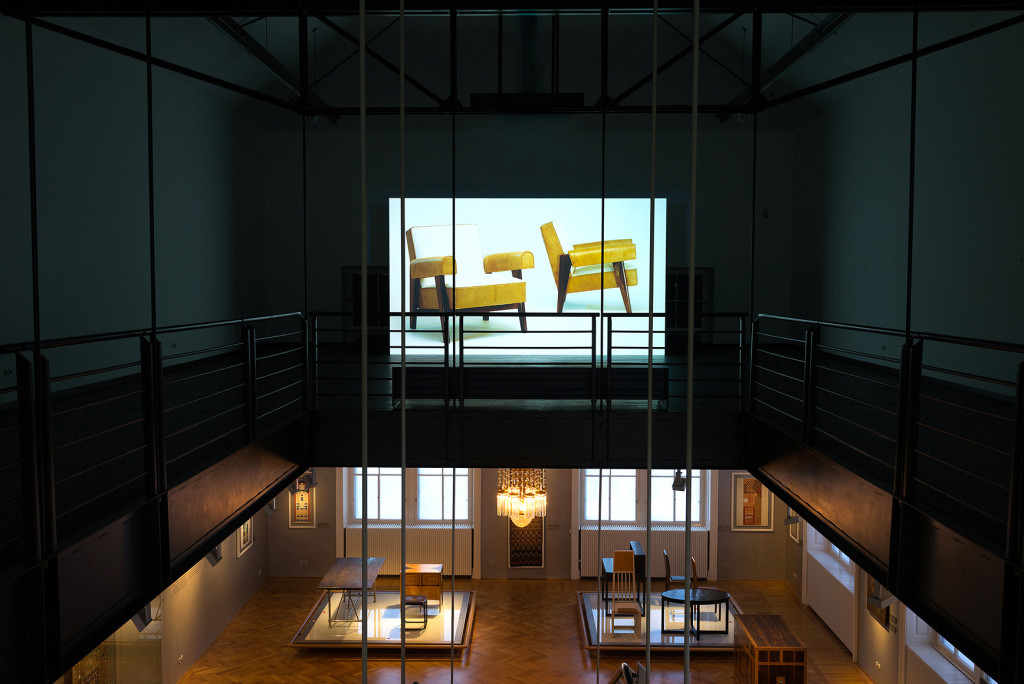Amie Siegel: Museum Für Angewandte Kunst
by Heather Findling
There is a strong comparison to be made between the temporary exhibition, Provenance, by artist Amie Siegel, currently on view at the Museum für angewandte Kunst’s (MAK), and the location in which the films are set—inside the permanent exhibition of the museum’s Vienna 1900 collection. In order to reach Siegel’s three-part installation on display, one must first ascend a large staircase that is surrounded by a set of the once functional (now embalmed) objects designed by the Wiener Werkstätte, a production community of visual artists and architects established in 1903. Shifting from the preservation of modern furniture that has ceased to have use-value in the museum, to Siegel’s films that emphasize a chair’s current market value, reflections on the validity of modern design are, in both cases, communicated to the viewer.

In Siegel’s films, scenes of Pierre Jeanneret’s modern chairs move backwards from their life as décor in affluent settings, to their sale at Christie’s auction house, to being ripped apart for restoration, and to (firstly) existing as no more than a neglected and damaged good in their place of origin. The chairs, designed in the 1950s for Le Corbusier’s progressive Chandigarh government building, existed as part of the collaboration between architect and Prime Minister of India, Nehru. The goal was to embrace an independent India that was untainted by tradition through speculative, modern design. However, it exists today as an example of dystopia, which is further established in Siegel’s close-ups of overgrown vines and monkeys reigning over Corbusier’s crumbling, concrete building. As the camera zooms in on one of the government buildings, an air of despondency is felt in the film; one shot depicts piles of Jeanneret’s chairs, which are unkempt and carelessly stacked. The reverse chronology that occurs within the screenplay presents extremities of value—from worth only in function as they exist in their original intended office setting, to appreciated status symbol on a yacht. The chair’s value seems to exist only when displaced. Whereas civil workers in Chandigarh use Jeanneret’s creation as a utilitarian item—omitting any exchange value—the chair is only “validated” through private means, through collectors at auction. Siegel’s chair exposes its use as an investment in status, aesthetic pleasure, and highlights a commitment to the safeguarding of an object that, as it enters the market, is deemed historically significant. It is specifically this last point that is confirmed by both the collector and the museum, as objects like Jeanneret’s chair, and even Siegel’s own film, could result in belonging in a permanent collection at a place like the MAK.

After Siegel’s film has finished, and one resumes their rightful place amongst a gallery full of pristine furniture, it seems obvious where the last stop for pieces like Jeanneret’s chair should be. Museums, infamously argued as places where an object is displayed on a pedestal turned deathbed, have the potential to create a context around the work that ceases to have any genuine relationship with the viewer. A functional piece, like a chair in a permanent collection, clearly lacks its original intent, but it also espouses education and cultural affirmation through its preservation, with the will to escape (if at times only temporarily) its expendability. Pieces by Werkstätte designers like Koloman Moser, Josef Hoffmann, and Otto Wagner, now on display at MAK, were originally created for wealthy patrons in Vienna. Purchased by rich art collectors, the fin-de-siècle chairs and tables once existed in lavish Viennese living rooms, where they symbolized one’s identity in an ahistorical, modern society. Now, resting in the museum, these works have turned into untouchable documents—only to be observed at a distance; decontextualized and cherished for their materiality and design, rather than their provenance.

Embracing an example of postwar urban planning, Siegel emphasizes the object’s story, observing how one piece of furniture now finds its luxurious home via auction—its cultural heritage stripped, and dispersed to those who can afford it. If the collector deaccessions the piece, it may once again enter the global market, into another auction house, or in yet another collection, until it finds its way to its ultimate resting place in the mausoleum, where the object’s story will most likely end in a permanent exhibition.
Amie Siegel: Provenance at the Museum Für Angewandte Kunst closed on August 23, 2015.